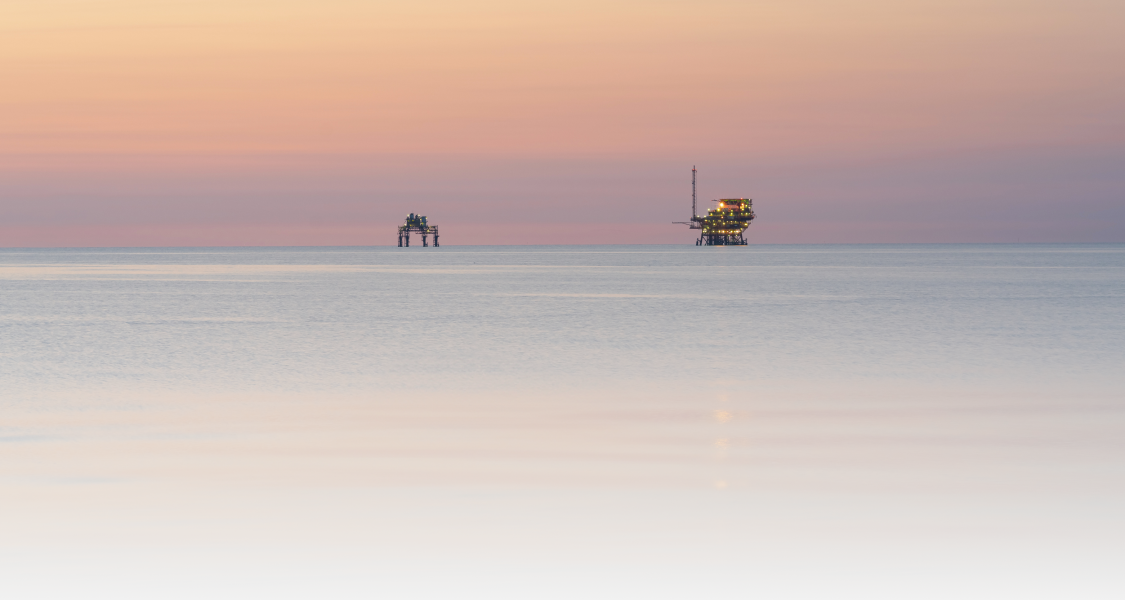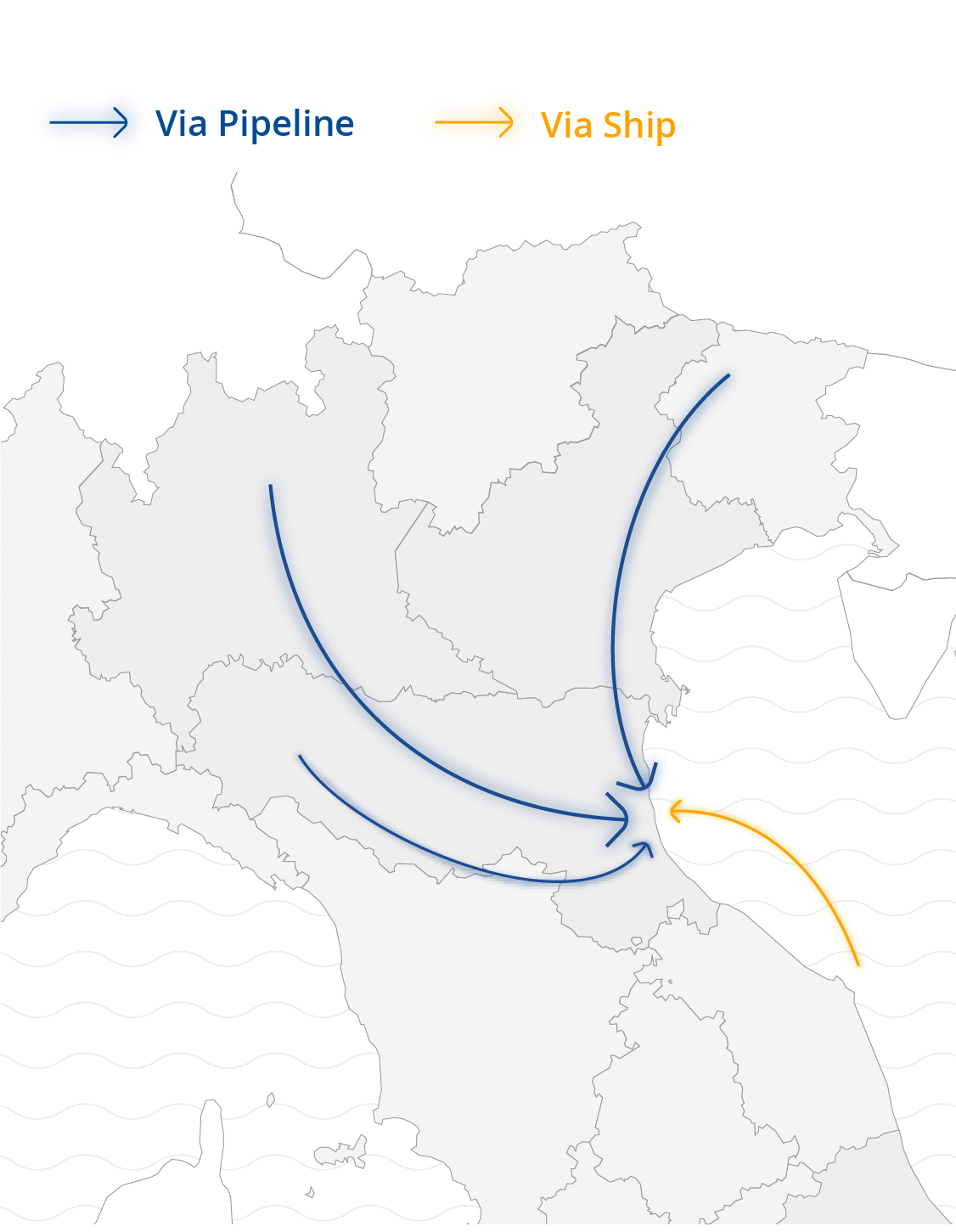
Eni and Snam are developing a CO2 storage facility off the coast of Ravenna that will use depleted gas fields to contain carbon hydroxide emissions from the industrial districts.

The Ravenna CCS project which involves building a CO2 storage infrastructure (Carbon Capture and Storage - CCS) in where emitted carbon dioxide is captured at source, transported and stored in exhausted gas fields in the Adriatic Sea. The goal is to contribute to reducing the emissions of energy-intensive and non-electrifiable industrial districts to make them more sustainable and competitive in the market, thereby creating the conditions for new opportunities for economic growth through decarbonization.
Thanks to the admission by the European Commission of the Callisto integrated Carbon Capture and Storage (CCS) project to the list of Projects of Common Interest (PCI Projects), the Ravenna CO2 storage hub will play a key role in the creation of a high-tech international supply chain in the decarbonization sector.
The project involves the permanent geological storage of carbon dioxide captured from third-party industrial chimneys and transported via underground pipelines or by ship to the Casalborsetti pumping station.
Eni (operator) and Snam are developing the Ravenna CCS project, Italy’s first initiative dedicated to the capture, transport and permanent storage of CO2, undertaken exclusively for environmental purposes to help decarbonise industrial sectors.
The Ravenna CCS project is structured in phases.
Phase 1, which started in August 2024 and is designed to capture and store up to 25,000 tonnes of CO2 from Eni’s natural gas treatment plant in Casalborsetti, in the municipality of Ravenna, has confirmed the high efficiency (>90%) of the capture system implemented. This result is particularly significant given the low concentration of carbon dioxide in the plant’s flue gas (<3%), which represents one of the most challenging industrial conditions.
Once captured, the carbon dioxide was transported through pipelines previously used for natural gas and suitably repurposed to the offshore Porto Corsini Mare Ovest platform, and is now permanently stored in the depleted gas field of the same name at a depth of around 3,000 metres.
Exploiting the great capacity of the Adriatic sea’s depleted natural gas fields, the Ravenna hub is set to become one of the world's largest CO2 storage sites and the largest in the Mediterranean.
Following Phase 1, the project will proceed to Phase 2, subject to completion of the authorisation processes already under way. The subsequent industrial phase aims to store up to 4 million tonnes of CO2 per year by 2030 to help decarbonise industry and hard-to-abate sectors. From 2030 onwards, the large capacity of the reservoirs - estimated at over 500 million tonnes in total - will allow volumes to increase to 16 or more million tonnes per year, depending on market demand.
Annual CO2 injection
capacity by 2030
Annual CO2 injection
capacity beyond 2030
Total CO2 storage capacity in the fields

The project is able to immediately reduce up to 90% of CO2 emissions from related production activities, such as those from thermal power plants or the so-called hard-to-abate sectors (e.g. (cement, steel, chemical and petrochemical industries, etc.), which lack effective decarbonization solutions in the short to medium term. By harmonising Eni's extensive knowledge of reservoirs with Snam's decades of experience in natural gas transport and storage and the world's most advanced techniques in emissions capture, the depleted gas reservoirs under the Adriatic sea will be repurposed, thus helping Italy and Europe reach their decarbonization targets. In the meantime, regardless of this new industrial plan, the production of natural gas is on track to be fully phased out in the coming years, in line with the decommissioning strategies agreed with the relevant authorities. Natural gas production from fields converted in this way will cease completely.
The project enables the development of an integrated multimodal CO2 chain, comprising an onshore pipeline network and a CO2 logistics hub located within the Ravenna industrial area, which will receive CO2 transported in liquid form by ship, rail and lorry.
Snam is responsible for building the dedicated onshore pipelines for transporting CO2, which will be developed in stages with the aim of connecting the main industrial districts in Northern Italy to the storage infrastructure.
In July 2024, the Environmental Impact Assessment (EIA) procedure under Legislative Decree 152/2006 was launched for the first gas pipeline routes, which will convey the captured CO2 from the industrial hubs in the Ferrara and Ravenna areas to the Casalborsetti pumping station and from there to the depleted gas fields in the Adriatic.
The full documentation is available for public consultation on the Environmental Assessments and Authorisations Portal of the Ministry of the Environment and Energy Security (VAS–VIA–AIA) at the following link: CCS Pianura Padana – CO2 Transport Network, Ferrara–Casalborsetti and Ravenna–Casalborsetti Pipelines – Documentation – Environmental Assessments and Authorisations – VAS – VIA – AIA

Upgrading
The full execution of the Ravenna CCS project will make it possible to upgrade and enhance of already available skills, for example in logistics and offshore operations - sectors known for their highly skilled workforce. The conversion of approximately 10% of the current infrastructure, such as pipelines and offshore facilities, will not only accelerate the achievement of ambitious decarbonization targets at controlled costsand, at the same time, to minimise the impact of the project on the local area to zero.
Growth and Sustainability
In addition to contributing to Italian and European decarbonization targets, the Ravenna CCS project has the potential to bring significant economic benefits to Ravenna's industrial district and, more broadly, to the entire Italian manufacturing sector. The ability to capture industrial emissions will usher in an ecosystem of products and services characterised by reduced CO2 emissions, stimulating both economic growth and job creation. A key element to highlight is the minimisation of the risk of companies relocating to non-EU countries that offer more relaxed environmental standards. The trend, known as “carbon leakage”, not only damages the competitiveness of the eurozone's economy, but is also detrimental to the common goal of curbing global greenhouse gas emissions. The presence of a large hub in the area dedicated to the capture and storage of CO2 emissions will not only serve to preserve the district's competitiveness, but will also increase its attractiveness with respect to national and international companies seeking to embark on new sustainable industrial initiatives.
Eni and Snam are developing a carbon capture and storage (CCS) project to reduce emissions from “hard to abate” industrial facilities.
Eni and Snam are developing a carbon capture and storage (CCS) project to reduce emissions from “hard to abate” industrial facilities.